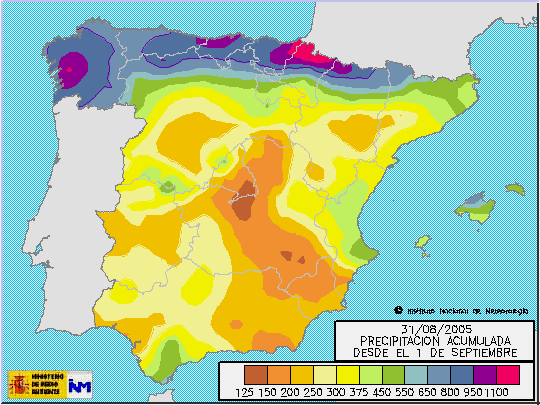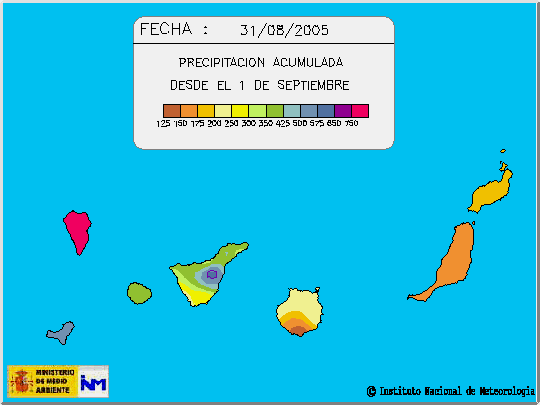|
BBC Radio 4 Documentary on desertification and drought in Spain (18/10/2006)
Costing the Earth looks at desertificaion and drought in Spain in a damning 30 minute documennary: Spain Turns to Dust. or direct to real audio link.
The Sahara is about to leap across the Mediterranean. According to the Spanish government one third of the country is in immediate danger of turning into desert. 'Costing the Earth' investigates the causes and weighs up the competing solutions.
Unrestricted tourist and residential development is sucking the water out of the coastal regions whilst the vast vegetable fields of Almeria and Murcia are dehydrating the interior. Both holiday and agricultural developments rely for their water on the digging of illegal boreholes. There are estimated to be 510,000 in Spain already and government attempts to shut them down have been met with fierce opposition. A new Spanish desert is bad news not just for local people and wildlife. It may also spell the end of the industry that supplies British supermarkets with cheap fruit and veg.
Solutions to desertification range from re-learning the canny irrigation techniques imported by the Moors to hi-tech solutions like heat islands. This is a technique whereby dark fabric is laid across a patch of land. The fabric absorbs the sun's heat, just as a large city does. A few miles up-wind you get higher rainfall, just as areas up-wind of cities currently do. (BBC)
Other points mentioned
- UN says 12% of Europe at risk of turning into desert. Between 30-60% of Spain is at inmediate risk from desertification.
- Causes: water demands from tourism and urbanisation (golf course, etc), fire, and above all intensive irrigated agriculture, fueled in part by demand from British supermarkets
- Summer 2005Worst dought in 60 years
- Doñana river dried out 3 years ago due overuse of boreholes. Doñana aquifer drying up. Key to survival of Doñana and therefore Iberian lynx. Park is surrounded by 1000 illegal boreholes.
- 80% of water use is by agriculture in Spain as a whole. This rises to 88% in much of Southern Spain.
October 10th 2005
- Doñana suffers severe drought, but birds to be helped Just 180mm have fallen in Doñana in the last 16 months, less than third of the yearly average. Just 7mm have fallen in the last 6 months. This is one of the worst droughts in many years, and comes just when 100,000's of wintering birds are due to arrive. The park authorites are to pump water from Doñana's
underground aquifers to fill the "lucios" (pools). Cereals are also to be sown to combat the lack of wild grains this year. The rainest months in Doñana are November to January, so hopefully this week's rains will be a foretaste. Just 176.8mm fell during the rain year of 2004-2005 which ended this August, the second driest since 1859, when records began in the wetland. http://www.consumer.es/web/es/medio_ambiente/2005/10/10/146037.php
27th Sept
- Drought worst since records began (El Mundo). Environment heads predict lowest rainfall for October-October rain year for 120 years, or since reliable records began. Worst hit has been dry farming, extensive livestock and forests through fire. Predictions for autumn winter seem to offer little repsite.
7th Sept 2005
- 20% of Spanish Med reservoirs now hold only sludge and undrinkable water (El Pais). While in Spain as a whole levels are still at 41.4% (lowest since 1995-the END rather than the START of a drought cycle), those of the Med are down to 32%, part of which is unusable.
- Driest rain year in Spain since records began in 1947 . (El Pais) September 2004-Aug 2005 with 411 litres over 613 average. Almost all of Spain affected. Possibly worst drought since 1887. Previous droughts 1941-44, 1979-82+ 1990-95. Linked to Azores High but explanation unclear. This article is based on this article from here at INM and in more detail than El Pais. Note these maps refer total rainfall and not percentage below average. Rainfall has been above average for the Canaries
 
4th June 2005
44% less rain has fallen in Spain over the last 9 months (Sept-May) than last year with 367 litres/m2 compared with 650 litres/m2.
890 municipalities in Catalonia out of the total 946 in Catalonia (95% of the population) are now faced with restrictions in water use.
Seven autonomous communities have placed restrictions on irrigation (Aragón, Cataluña, Comunidad Valenciana, Murcia, Castilla-La Mancha, Andalucía and Extremadura).
The last drought cycles to hit Spain were 1990-95 and 1979-1982. Some experts predict we may be moving into another cycle. As in previous cycles there is a huge difference between the Atlantic and the Mediterranean. Overall, Spanish resovoirs are at 59.2% of their capacity, but those of the Segura 17.4%; while Asturias and Cantabria are at 86,6%. In Asturias and Cantabria there's 55% more water stored than in September 2004.
|

